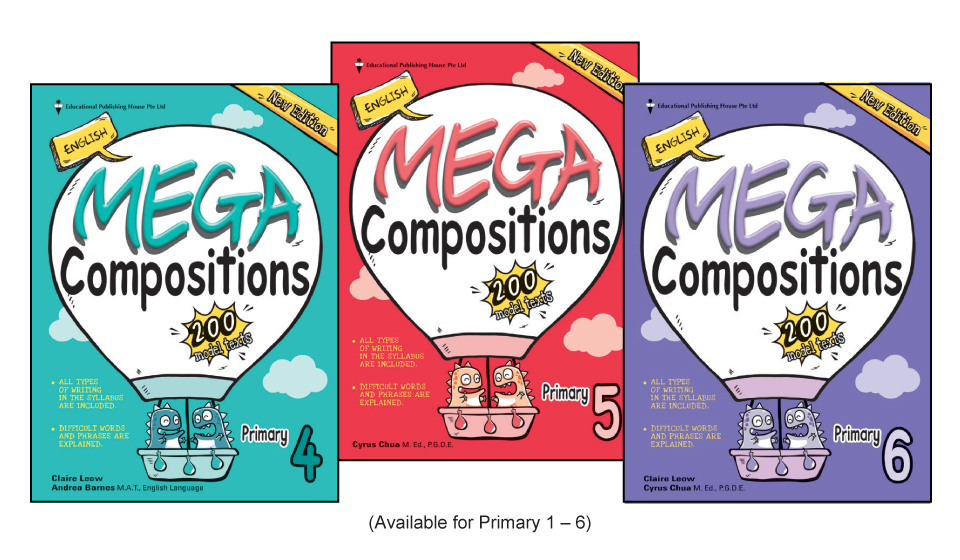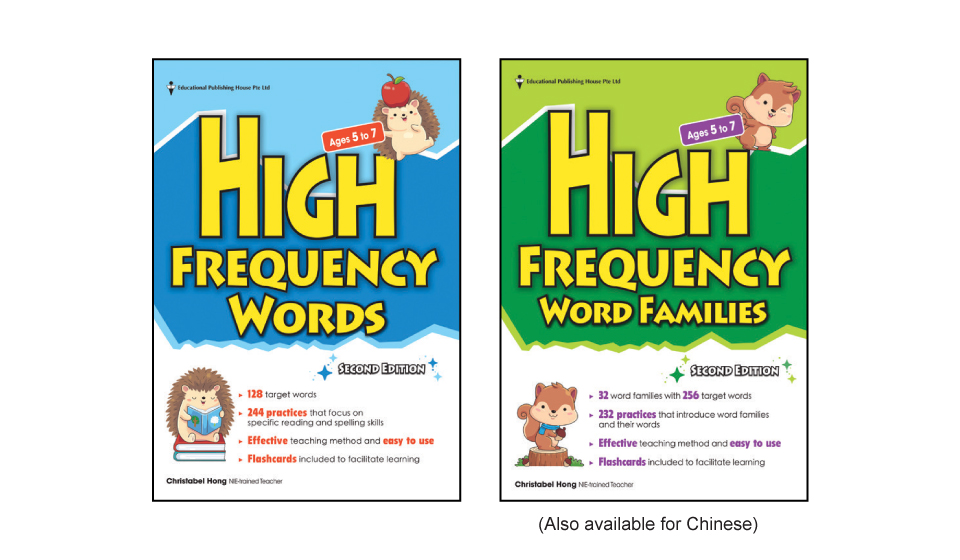About Us
Education

Education

Cultivating a Passion for READING & WRITING
Getting in the groove of reading a book or penning a story can be as easy as one-two-three.
Mar 2024 | By EPH Editorial Team
Getting in the groove of reading a book or penning a story can be as easy as one-two-three.
Mar 2024 | By EPH Editorial Team
In today’s digital age, we do not read and write as much as before because a lot of us spend more time on our mobile devices watching multimedia content and playing games instead. Writing compositions in school can then feel like a chore as we fall out of practice. To reignite and nurture your interest in reading and writing, here are some suggestions.
1 Make Time to Read
Reading and writing go together. Reading sparks your imagination, creativity, and critical and analytical skills, which are the key ingredients to writing. To develop a reading habit, set aside some time to read every day. You can start small. For instance, just 15 minutes a day can be the start of a wonderful habit. Making time to read before bed can help you to relax and sleep better.
2 Read Quality Materials
A good book draws you in and makes it hard for you to stop reading. If you’ve yet to stumble upon a book that you truly like, try expanding your selection of reading materials. Find out what suits your tastes by exploring different genres. Whet your reading appetite by choosing books with interesting settings, plots, or characters. You can also read different text types to expand your vocabulary and pick up various comprehension strategies.
3 Make Time to Write
To improve as a writer, you simply need to keep trying, learning, and writing along the way. An easy way to go about this is to start off by writing about things that interest you or you feel passionate about, like your favourite sport, pop star, or book. You can also keep a journal to pen your innermost thoughts or reflections. Express your true voice by writing and you’ll naturally write more over time.
For more inspiration to get your writing juices flowing, check out the new edition of the English Mega Compositions series ($10.90 each), published by Educational Publishing House (EPH). Each book features an extensive collection of 200 compositions of different text types. This series fosters a love for reading and offers inspiring ideas for your own writing.
Reading and writing go together. Reading sparks your imagination, creativity, and critical and analytical skills, which are the key ingredients to writing. To develop a reading habit, set aside some time to read every day. You can start small. For instance, just 15 minutes a day can be the start of a wonderful habit. Making time to read before bed can help you to relax and sleep better.
2 Read Quality Materials
A good book draws you in and makes it hard for you to stop reading. If you’ve yet to stumble upon a book that you truly like, try expanding your selection of reading materials. Find out what suits your tastes by exploring different genres. Whet your reading appetite by choosing books with interesting settings, plots, or characters. You can also read different text types to expand your vocabulary and pick up various comprehension strategies.
3 Make Time to Write
To improve as a writer, you simply need to keep trying, learning, and writing along the way. An easy way to go about this is to start off by writing about things that interest you or you feel passionate about, like your favourite sport, pop star, or book. You can also keep a journal to pen your innermost thoughts or reflections. Express your true voice by writing and you’ll naturally write more over time.
For more inspiration to get your writing juices flowing, check out the new edition of the English Mega Compositions series ($10.90 each), published by Educational Publishing House (EPH). Each book features an extensive collection of 200 compositions of different text types. This series fosters a love for reading and offers inspiring ideas for your own writing.

HIGH-FREQUENCY WORDS for Preschool Learning
Here’s how to incorporate high-frequency words in your tot’s daily routine to maximise preschool language learning.
Nov 2023 | By EPH Editorial Team
Here’s how to incorporate high-frequency words in your tot’s daily routine to maximise preschool language learning.
Nov 2023 | By EPH Editorial Team
As parents, you hold the key to your child’s early language development. Did you know that introducing high-frequency words — words that appear often in everyday reading and writing — during preschool years can greatly boost your child’s language skills? Here are five effective tips to help you maximise your preschooler’s language learning using high-frequency words.
1 Make Learning Fun
Learning doesn’t have to feel like a chore. Incorporate high-frequency words into games and activities your child already loves. Use flashcards and play ‘I Spy’ using high-frequency words instead of objects. These methods turn learning into a playful adventure, keeping your child engaged and excited.
2 Create a Word-Rich Environment
Surround your child with words! Label everyday items around the house (e.g. mug, pot, mat) using sticky notes or removable tape. When they see these words often, paired with high-frequency words, they’ll start recognising and remembering them naturally.
3 Read Together
Reading is a powerful tool for language development. Choose books that feature high-frequency words and read aloud together. Encourage your child to point at the words as you read them. Repetition is key! The more your child hears and sees these words, the more they’ll understand and use them.
4 Sing and Rhyme
Children love music and rhymes. Incorporate high-frequency words into catchy songs and rhymes. Create your own tunes or find existing ones online. When words are set to music, they become even more memorable. You’ll be amazed at how quickly your child picks up these words through rhythm and melody.
5 Converse Daily
Simple daily conversations provide countless opportunities to introduce high-frequency words. Talk to your child about their day, activities, and surroundings. Use these words naturally in sentences, for instance, “Put on your cap before going outside.” Contextual use helps your child grasp the meaning and usage of these words.
To complement the above, introduce your child to activity books that are both enjoyable and feature effective teaching methods. Adored by parents and teachers alike, the new 2nd edition of the High Frequency Words series ($12.90 each) from Educational Publishing House serves as a reliable companion for your child’s language development. Equipped with ample practices and flashcards, these easy-to-use books will empower your child to become better readers!
Remember, every child learns at their own pace. Celebrate their progress and efforts along the way. By incorporating high-frequency words into their daily routine, you’re building a solid foundation for your child’s language skills as they grow.
Learning doesn’t have to feel like a chore. Incorporate high-frequency words into games and activities your child already loves. Use flashcards and play ‘I Spy’ using high-frequency words instead of objects. These methods turn learning into a playful adventure, keeping your child engaged and excited.
2 Create a Word-Rich Environment
Surround your child with words! Label everyday items around the house (e.g. mug, pot, mat) using sticky notes or removable tape. When they see these words often, paired with high-frequency words, they’ll start recognising and remembering them naturally.
3 Read Together
Reading is a powerful tool for language development. Choose books that feature high-frequency words and read aloud together. Encourage your child to point at the words as you read them. Repetition is key! The more your child hears and sees these words, the more they’ll understand and use them.
4 Sing and Rhyme
Children love music and rhymes. Incorporate high-frequency words into catchy songs and rhymes. Create your own tunes or find existing ones online. When words are set to music, they become even more memorable. You’ll be amazed at how quickly your child picks up these words through rhythm and melody.
5 Converse Daily
Simple daily conversations provide countless opportunities to introduce high-frequency words. Talk to your child about their day, activities, and surroundings. Use these words naturally in sentences, for instance, “Put on your cap before going outside.” Contextual use helps your child grasp the meaning and usage of these words.
To complement the above, introduce your child to activity books that are both enjoyable and feature effective teaching methods. Adored by parents and teachers alike, the new 2nd edition of the High Frequency Words series ($12.90 each) from Educational Publishing House serves as a reliable companion for your child’s language development. Equipped with ample practices and flashcards, these easy-to-use books will empower your child to become better readers!
Remember, every child learns at their own pace. Celebrate their progress and efforts along the way. By incorporating high-frequency words into their daily routine, you’re building a solid foundation for your child’s language skills as they grow.
Scroll to Top
Customer Care
Retail Stores
Corporate Sales
Oh, you're leaving?
×
As you are leaving our site, please note that we are not responsible for the content, products, or services available on any external websites you may visit.
Continue to Corporate Website
Continue to Corporate Website
Oh, you're leaving?
×
As you are leaving our site, please note that we are not responsible for the content, products, or services available on any external websites you may visit.
Continue to EPH Website
Continue to EPH Website
Customer Care
Retail Stores
Members
Corporate Sales
Gift Voucher

Title
© Copyright 2025 Popular Book Company Pte Ltd .197500612M All Rights Reserved.






